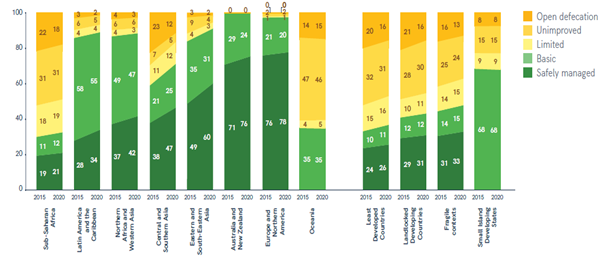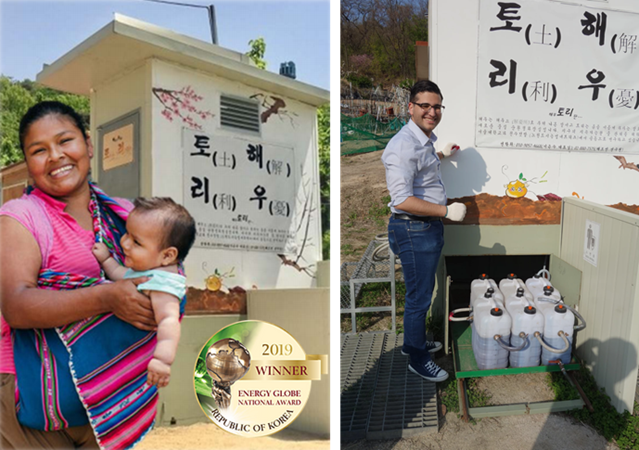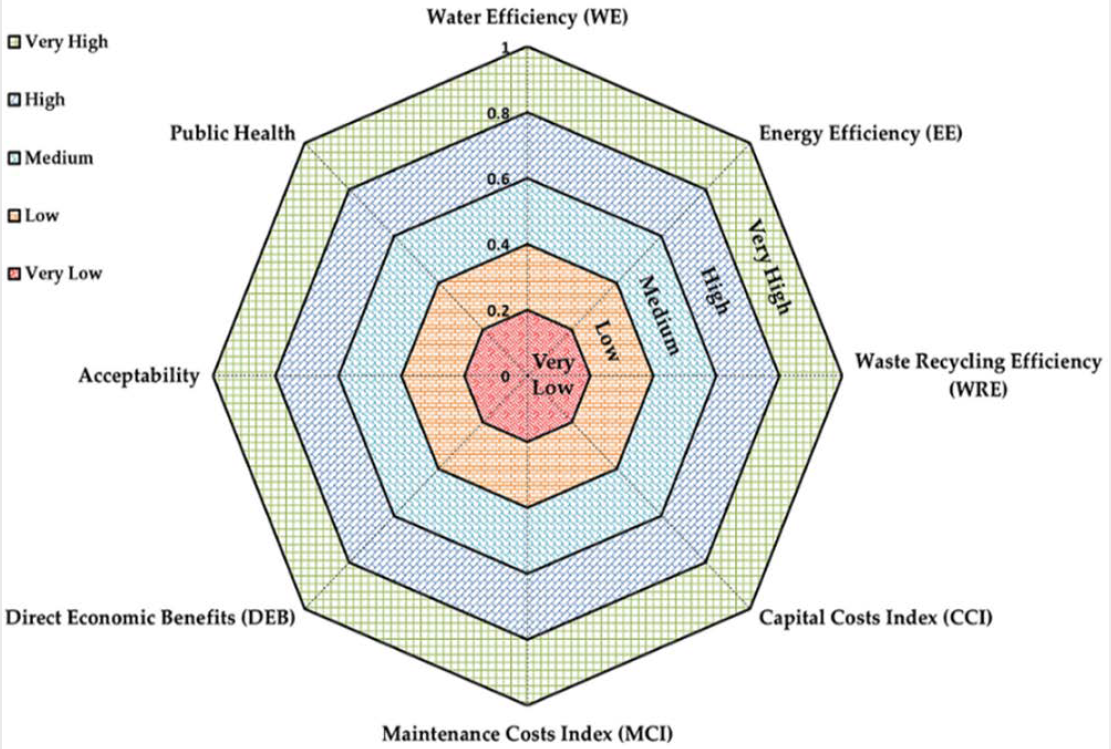World Toilet Day 2021: how can technologies deliver sustainable sanitation for all?
Despite recent progress, we’re still facing a global sanitation crisis. According to WHO/UNICEF currently almost half of the global population (46%) still does not have access to safely managed sanitation services. Reaching SDG 6.2 may seem like an unattainable objective, especially in critical regions where progress has been lagging, namely sub-Saharan Africa and Central and Southeast Asia. But there are technologies that could be game-changers for providing sustainable and safe sanitation for all by 2030. Emerging technologies can provide outstanding opportunities for sustainable solutions from a technical point of view. Nevertheless, most of the solutions face barriers in terms of social acceptance and/or affordability and stop at pilot-scale levels, leading to missed opportunities.

Regional Sanitation Coverage During 2015-2020. Source: WHO/UNICEF Joint Monitoring Program For Water Supply, Sanitation And Hygiene 2000-2020
The theme for World Toilet Day 2021 is about valuing toilets. Valuing toilets also means reconsidering our approach to economic, social, and cultural aspects which are currently hindering the provision of sustainable sanitation systems for all. Understanding the sanitary demands of a community and choosing accordingly the most sustainable and appropriate technology can be a game-changing step towards SDG6. According to UNICEF, approximately 30-50% of sanitation projects fail after two to five years because of applying inappropriate or unaffordable technical approaches and lack of reasonable monitoring and services. One reported example is the case of the use of eco-toilets in the Chinese Daxing Ecological Community in 2004-2009. There are a number of reasons why this happens, but there are steps that can be taken to ensure that innovations are properly evaluated and fit for success.
Most approaches aim at a one-size-fits-all solution, which neglects important social and cultural aspects such as acceptability and affordability of the solution in the community where it is going to be implemented. We need to remind ourselves that sustainable sanitation is a global problem with local solutions.
Sanitation systems such as the Resource Circulated Sanitation system, first developed in South Korea and designed for utilisation in remote and rural areas, can be seen as a good example of a sustainable, resource-oriented sanitation technology that treats sanitary waste (urine and faeces) as a valuable resource that can be economically beneficial to the community in the form of fertilizer. In this approach, traditional Korean toilet culture and attitudes towards separating waste at source and reusing waste were considered. Using treated sanitary matter as fertilizer and soil conditioner demonstrated both environmental and economic benefits. To boost social acceptance and a sense of ownership and responsibility towards the new system in the community, continuous provision of maintenance services and training were provided.

Resource Circulated Sanitation System: Winner of the Leaving No One Behind Innovation Award 2019, and Energy Globe Republic of Korea National Award 2019
Another challenge is when solutions are not properly evaluated with robust and reasonable indicators before implementation. Therefore, technical, economic, and social issues usually emerge after implementation and can lead to a project failing.
A useful tool to address this problem can be Hashemi’s Sanitation Sustainability Index, a recently developed community-based indicator to evaluate different sanitation options for a specific community based on the technical, economic, and social characteristics of the sanitation system.

Hashemi’s Sanitation Sustainability Index (HSSI)
Technologies to deliver SDG6.2 not only need developments from a scientific or technical point of view, but it is also more essential than ever to consider important economic and social aspects and gain a deeper understanding to deliver sustainable and tailored solutions which work for the communities. Valuing toilets is about valuing communities. Even though sanitation is a recognised human right, according to the UN the world urgently needs massive investment and innovation to quadruple progress all along the ‘sanitation chain’, from toilets to the transport, collection, and treatment of human waste. Moreover, the UN urges governments to include the people who are being left behind without access to toilets in planning and decision-making processes.
For more information on World Toilet Day, please visit the official campaign website: www.worldtoiletday.org
Follow Shervin Hashemi on Twitter: @shervincee

